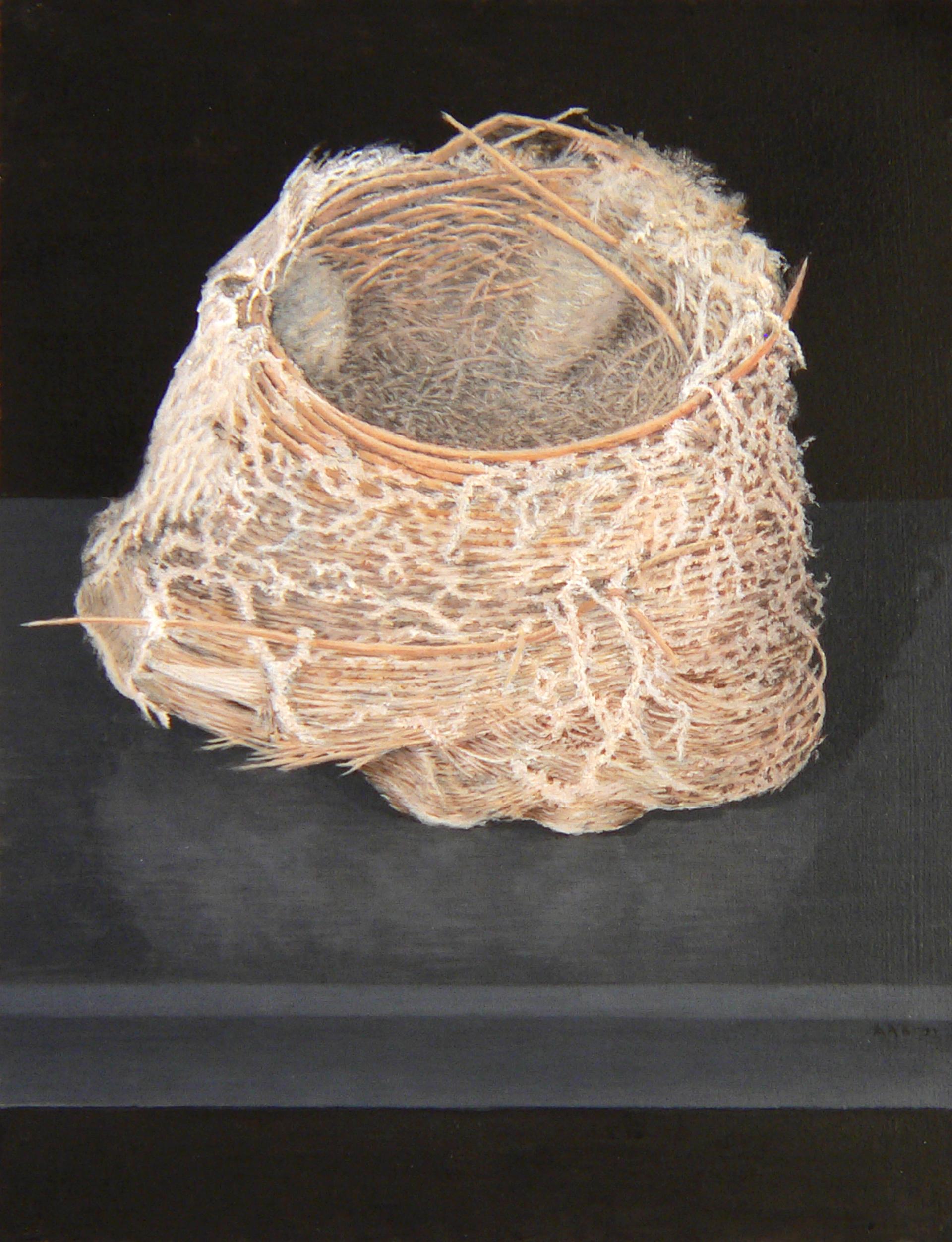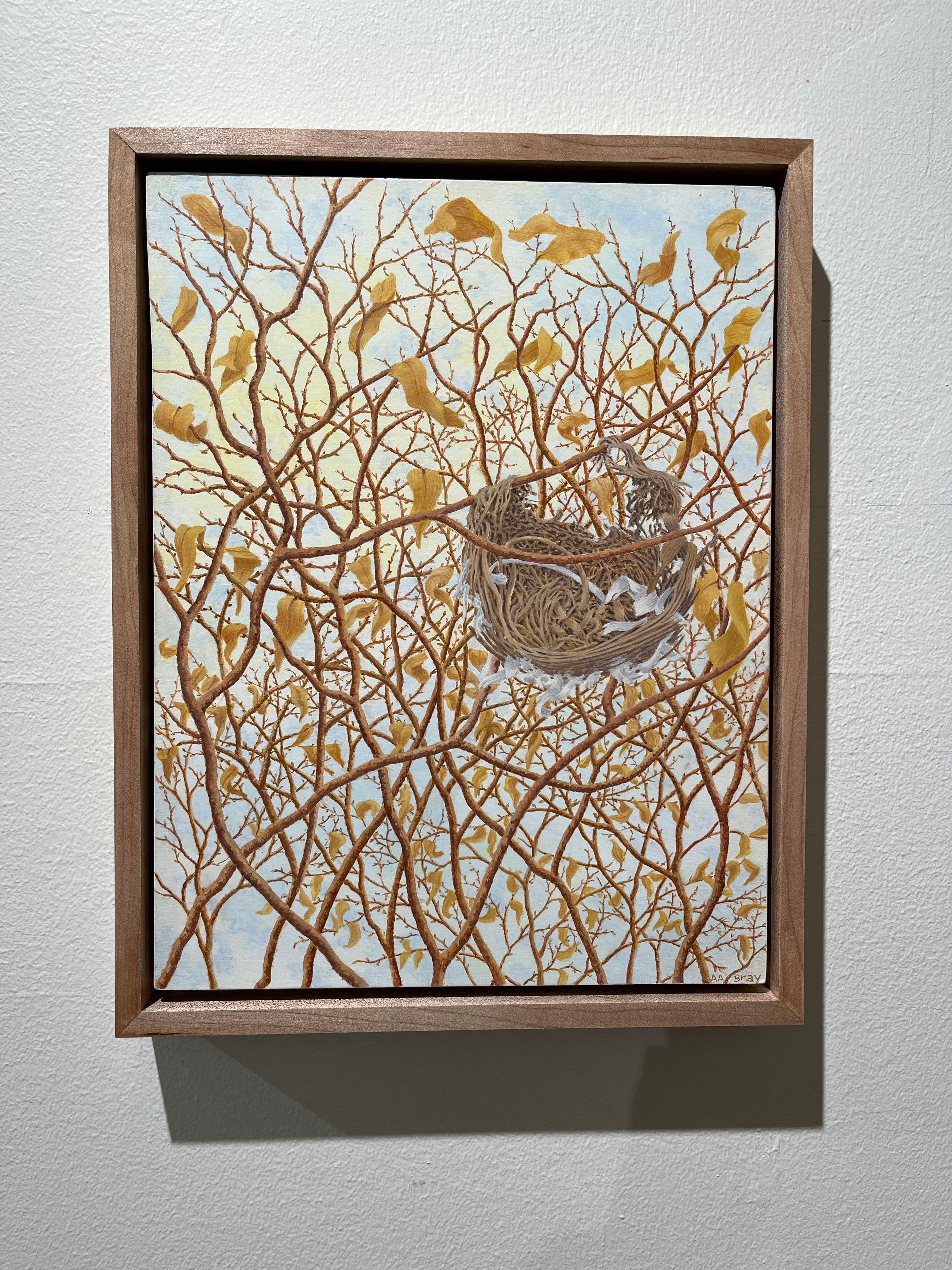Items Similar to Landscape with Ruins, Large Painting by Poutchkov
Want more images or videos?
Request additional images or videos from the seller
1 of 5
Vladimir PoutchkovLandscape with Ruins, Large Painting by Poutchkovcirca 1985
circa 1985
About the Item
Artist: Vladimir Poutchkov (Russian/American XXth)
Title: Landscape with Ruins
Year: circa 1985
Medium: Tempera and Watercolor on Paper, signed l.r.
Size: 30 x 42.5 inches
- Creator:Vladimir Poutchkov (Russian)
- Creation Year:circa 1985
- Dimensions:Height: 30 in (76.2 cm)Width: 42.5 in (107.95 cm)
- Medium:
- Movement & Style:
- Period:
- Condition:
- Gallery Location:Long Island City, NY
- Reference Number:1stDibs: LU4661833063
About the Seller
4.8
Gold Seller
These expertly vetted sellers are highly rated and consistently exceed customer expectations.
Established in 1979
1stDibs seller since 2014
2,719 sales on 1stDibs
Typical response time: <1 hour
- ShippingRetrieving quote...Ships From: Long Island City, NY
- Return PolicyA return for this item may be initiated within 7 days of delivery.
More From This SellerView All
- April, Framed Watercolor by Boris SveshnikovLocated in Long Island City, NYArtist: Boris Sveshnikov, Russian (1927 - 1998) Title: April Year: 1987 Medium: Watercolor on Paper Size: 27 x 19.25 in. (68.58 x 48.9 cm)Category
1980s Impressionist Landscape Paintings
MaterialsWatercolor
- On the Steps of Santa Prisca, Taxco Mexico - Gouache by Franklin Moss HamiltonBy Franklin Moss HamiltonLocated in Long Island City, NYArtist: Frank Moss Hamilton, American (1930 - 1999) Title: On the Steps of Santa Prisca, Taxco Mexico Year: circa 1960 Medium: Gouache On Paper, signed l.r. Size: 23.5 x 35.5 in. (59...Category
1960s American Impressionist Landscape Paintings
MaterialsGouache
- The "Cannonball", Locomotive Watercolor by Reginald MarshBy Reginald MarshLocated in Long Island City, NYArtist: Reginald Marsh, American (1898 - 1954) Title: The "Cannonball" Year: 1936 Medium: Watercolor on Paper, signed, titled, and dated l.r. Size: 16.5 in. x 22.5 in. (41.91 cm x 57...Category
1930s American Impressionist Landscape Paintings
MaterialsWatercolor
- Acapulco Beach Scene, Watercolor by Dong KingmanBy Dong KingmanLocated in Long Island City, NYArtist: Dong Moy Chu Kingman, Chinese/American (1911 - 2000) Title: Acapulco Beach Scene I Year: 1968 Medium: Watercolor, signed and dated l.r. Size: 10.5 x 18 on 13.5 x 20.5 inches ...Category
1960s American Impressionist Landscape Paintings
MaterialsWatercolor
- Farm Lane, Watercolor Painting by Ben BennBy Ben BennLocated in Long Island City, NYArtist: Ben Benn, Russian/American (1884 - 1983) Title: Farm Lane Medium: Watercolor on Paper, signed l.r. Size: 18.5 x 12 in. (46.99 x 30.48 cm) Frame Size: ...Category
1920s American Impressionist Landscape Paintings
MaterialsWatercolor
- Scene on Windspear Road, Watercolor by Charles Burchfield 1935By Charles E. BurchfieldLocated in Long Island City, NYA watercolor painting by Charles Burchfield from 1935. An impressionist landscape of green foliage and a grassy hill in soft earth tones. Signed and dated in the lower right, beautif...Category
1930s Impressionist Landscape Paintings
MaterialsWatercolor, Paper
You May Also Like
- California Seascape with GullsLocated in Houston, TXEarly 20th Century California Seascape done with watercolor and egg tempera on paper. Painting depicts seagulls over crashing waves. In a similar ...Category
20th Century Impressionist Landscape Drawings and Watercolors
MaterialsEgg Tempera, Watercolor
- Old Mill Point, Cape Cod, MassLocated in Milford, NHA fine naive landscape painting with a windmill by American artist Janet Munro (b. 1949). Munro was born in Woburn, MA, and her work focuses o...Category
1980s American Impressionist Landscape Paintings
MaterialsOil, Egg Tempera, Board
- Alan Bray, Nest in a Nest, 2023, impressionist casein nature nest paintingBy Alan BrayLocated in New York, NYThe latest painting from Alan Bray is a rare and exotic sighting, indeed. He’s shifted his focus away from the human realm and up to the skies, capturing an empty bird’s nest camoufl...Category
2010s American Impressionist Landscape Paintings
MaterialsCasein, Panel
- Alan Bray, Windblown, 2023, impressionist casein nature nest paintingBy Alan BrayLocated in New York, NYThe latest painting from Alan Bray is a rare and exotic sighting, indeed. He’s shifted his focus away from the human realm and up to the skies, capturing an empty bird’s nest camoufl...Category
2010s American Impressionist Landscape Paintings
MaterialsCasein, Panel
- Pikes Peak, 1940s Colorado Mountain Landscape in Autumn, Tempera PaintingBy Charles Ragland BunnellLocated in Denver, COOriginal vintage 1941 Colorado landscape painting with autumn leaves and Pikes Peak blanketed in snow by Charles Bunnell (1897-1968). Inscribed verso, "To Laura, November 22, 1941", egg tempera on board. Signed by the artist in the lower left corner and titled verso. Presented in a custom frame, outer dimensions measure 15 ½ x 19 ¼ x 1 ¼ inches. Image size is 7 ¾ x 11 inches About the Artist: Artist and teacher, Charles ("Charlie") Bunnell worked in a variety of styles throughout his career because as an artist he believed, "I’ve got to paint a thousand different ways. I don’t paint any one way." At different times he did representational landscapes while concurrently involved with semi- or completely abstract imagery. He was one of a relatively small number of artists in Colorado successfully incorporating into their work the new trends emanating from New York and Europe after World War II. During his lifetime he generally did not attract a great deal of critical attention from museums, critics and academia. However, he personally experienced a highpoint in his career when Katherine Kuh, curator at the Art Institute of Chicago, personally chose one of his paintings - Why? - for its large exhibition of several hundred examples of abstract and surrealist art held in 1947-48, subsequently including it among the fifty pieces selected for a traveling show to ten other American museums. An only child, Bunnell developed his love of art at a young age through frequent drawing and political cartooning. In high school he was interested in baseball and golf and also was the tennis champion for Westport High School in Kansas City. Following graduation, his father moved the family to Denver, Colorado, in 1916 for a better-paying bookkeeping job, before relocating the following year to Colorado Springs to work for local businessman, Edmond C. van Diest, President of the Western Public Service Company and the Colorado Concrete Company. Bunnell would spend almost all of his adult life in Colorado Springs. In 1918 he enlisted in the United States Army, serving in the 62nd Infantry Regiment through the end of World War I. Returning home with a 10% disability, he joined the Zebulon Pike Post No. 1 of the Disabled American Veterans Association and in 1921 used the benefits from his disability to attend a class in commercial art design conducted under a government program in Colorado Springs. The following year he transferred to the Broadmoor Art Academy (founded in 1919) where he studied with William Potter and in 1923 with Birger Sandzén. Sandzén’s influence is reflected in Bunnell’s untitled Colorado landscape (1925) with a bright blue-rose palette. For several years thereafter Bunnell worked independently until returning to the Broadmoor Art Academy to study in 1927-28 with Ernest Lawson, who previously taught at the Kansas City Art Institute where Bunnell himself later taught in the summers of 1929-1930 and in 1940-41. Lawson, a landscapist and colorist, was known for his early twentieth-century connection with "The Eight" in New York, a group of forward-looking painters including Robert Henri and John Sloan whose subject matter combined a modernist style with urban-based realism. Bunnell, who won first-place awards in Lawson’s landscapes classes at the Academy, was promoted to his assistant instructor for the figure classes in the 1928-29 winter term. Lawson, who painted in what New York critic James Huneker termed a "crushed jewel" technique, enjoyed additional recognition as a member of the Committee on Foreign Exhibits that helped organize the landmark New York Armory Exhibition in 1913 in which Lawson showed and which introduced European avant-garde art to the American public. As noted in his 1964 interview for the Archives of American Art in Washington, DC, Bunnell learned the most about his teacher’s use of color by talking with him about it over Scotch as his assistant instructor. "Believe me," Bunnell later said, "[Ernie] knew color, one of the few Americans that did." His association with Lawson resulted in local scenes of Pikes Peak, Eleven Mile Canyon, the Gold Cycle Mine near Colorado City and other similar sites, employing built up pigments that allowed the surfaces of his canvases to shimmer with color and light. (Eleven Mile Canyon was shown in the annual juried show at the Carnegie Institute in Pittsburgh in 1928, an early recognition of his talent outside of Colorado.) At the same time, he animated his scenes of Colorado Springs locales by defining the image shapes with color and line as demonstrated in Contrasts (1929). Included in the Midwestern Artists’ Exhibition in Kansas City in 1929, it earned him the gold medal of the Kansas City Art Institute, auguring his career as a professional artist. In the 1930s Bunnell used the oil, watercolor and lithography media to create a mini-genre of Colorado’s old mining towns and mills, subject matter spurned by many local artists at the time in favor of grand mountain scenery. In contrast to his earlier images, these newer ones - both daytime and nocturnal -- such as Blue Bird Mine essentially are form studies. The conical, square and rectangular shapes of the buildings and other structures are placed in the stark, undulating terrain of the mountains and valleys devoid of any vegetation or human presence. In the mid-1930s he also used the same approach in his monochromatic lithographs titled Evolution, Late Evening, K.C. (Kansas City) and The Mill, continuing it into the next decade with his oil painting, Pikes Peak (1942). During the early 1930s he studied for a time with Boardman Robinson, director of the Broadmoor Art Academy and its successor institution, the Colorado Springs Fine Arts Center from 1930 to 1947. In 1934 Robinson gave him the mural commission under the Public Works of Art Project (PWAP) for West Junior High School in Colorado Springs, his first involvement in one of several New Deal art...Category
1930s American Impressionist Landscape Paintings
MaterialsEgg Tempera, Board
- Sochi. 1977. Cardboard, tempera, 24.5x34 cmBy Vladimir GlushenkovLocated in Riga, LVSochi. 1977. Cardboard, tempera, 24.5x34 cm Vladimir Borisovich Glushenkov (May 21, 1948, Riga - December 26, 2009, Riga.) - painter, graphic artist, poet, translator. Born in Riga...Category
1970s Impressionist Landscape Paintings
MaterialsTempera, Cardboard
Recently Viewed
View AllMore Ways To Browse
Russian Large Paintings
Large Russian Impressionist Painting
Icon Mary
Res Bank
Traveling Picture Frame
Paintings By D Smith
Small English Oil Painting
Antique French Oil Painting On Board
Italian Oil Paintings With Children
Antique Beach Painting
Bouquet A Paris
Hudson River School Oil Paintings
Hudson River School Oil
Italian Countryside Paintings
Italy Countryside Paintings
Landscape With A Cow
Mining Paintings
Oil Painting Of Boat On The Water


